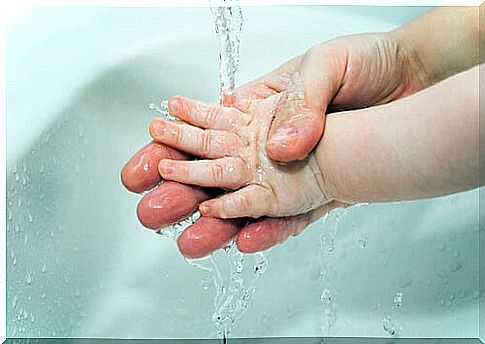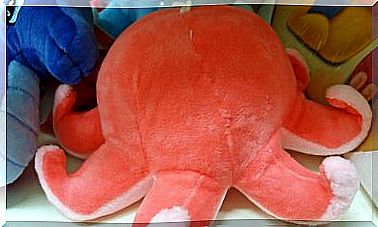10 Tricks To Cut Your Baby’s Nails And Not Die Trying

A task as simple as cutting nails represents a real challenge when it comes to babies, as they are very delicate and small. A baby’s fingers are tiny and his nails are smaller; Many times the skin can be confused with the nail and therefore there is the fear of causing an injury to fear that they can move.
The delicacy of the baby is one of the first challenges when offering basic care, that is why we care about their food, hygiene and clothing, as well as buying all the care products and their respective use.
Apparently the job of trimming her nails requires more practice than we might imagine. For this reason, sometimes parents can avoid it for a long time, which is not recommended. We are also determined to leave it in the hands of someone who has more experience or more willingness to do so.
Babies’ nails grow just as fast as adult nails, even faster, because the growth is noticeable to a greater extent. We know that cutting them is a difficult job, so in this section we are going to give you ten tricks to improve this habit.
7 tricks to cut your baby’s nails
Cut your baby’s nails and not die trying, it is possible when you take the recommendations of the experts. We clarify that experts can be both pediatricians and mothers, because experience is achieved with practice.

There are two basic factors that must be controlled: good vision of the nail and the movement of the baby. Although these are the main reasons for the task to be difficult, they are the keys to taking the task by the horns.
The tricks to cut your baby’s nails are the following:
- Take advantage while the child sleeps. This will avoid the fear that it will move, but creates the uneasiness of waking it up in the process; so if you are awake do it with the help of another person.
- Use the right implements. Round-edged scissors or the specially designed baby nail clipper should be used; Not using the right tools makes the job more difficult and riskier.
- Create the habit. Babies’ nails should begin to be cut from birth, because they grow quickly and therefore can become a danger of the child’s face scratching. There is no impediment to perform this task from day one, and not doing it is harmful.
- Other techniques. It is very easy to cut each fragment, because the nails are delicate and break easily, that is why it is also recommended to use an electric or manual file that can remove the excesses without cutting, this only when they are not very long.
- It is convenient that they are cut after the bath so that they are softer. It is also advisable that they are not cut too flush with the finger, in order to avoid cutting the fingertip.
- Improve perspective. It is customary to lift the finger and put the nail up, but this makes vision difficult; It is preferable to place the fingernail downwards and press the yolk so that it separates a little towards the back.
- Choose the right place. Even if you are trying to improve its comfort and that is why you prefer to leave it in its crib, we recommend that you look for a light and ventilated place in order to avoid that due to lack of vision you can harm the baby.
- Be wise, but don’t be afraid. The firmness with which the nails are cut is the main key to being successful. If we are nervous we become more clumsy and we will endanger the health of our little one.
- Use a distractor. When the baby gets older, his nails get stronger and his skin is less delicate; but their restlessness also grows, which greatly compromises the cutting of their nails. For older children, you can apply the distraction technique, so that they notice something else and do not move.
- Clean after cutting. Although they may seem like tiny and harmless pieces, the nails that you have cut represent a danger for the baby because they could get into his mouth or his eyes. That is why it is advisable to clean their hands, their clothes and the space where the child stays.

We know that these tips will encourage parents’ motivation to improve this healthy and vital practice, but it is better known that over time parents gain the experience to perform this task.
This makes it possible for them to accommodate themselves according to their own comfort and safety, all according to the characteristics of their children and the instruments at their fingertips.









